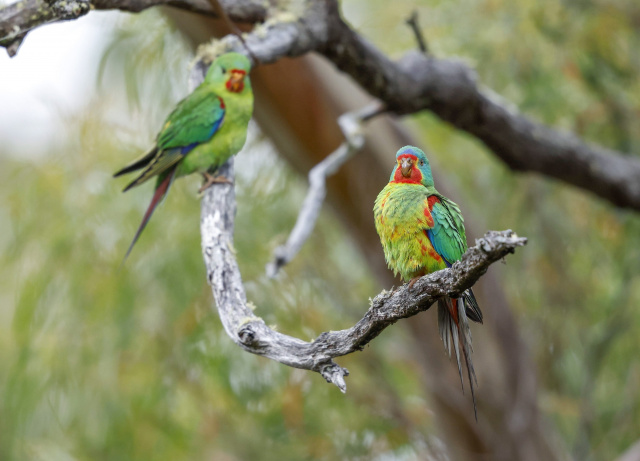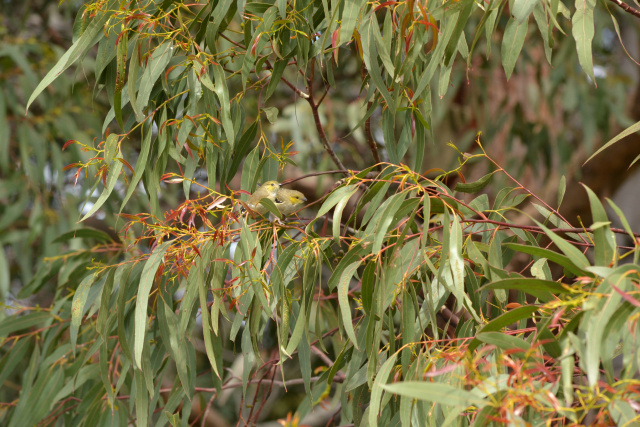It is these complimentary relationships that animals and birds build up with the vegetation.
The Blue Gum produces food that is suitable for Swift Parrots when they’re flowering. And when they flower they flower profusely. So these are preferred areas where there are plenty of foods when Swift parrot chicks hatch. So the Swift Parrots feed on these blossoms. And these trees are so important - Swift parrots are in a lot of trouble because we are losing trees right across its range – feeding – breeding – you name it.

White gums produce the most lerps, and that’s why forty-spotted pardalotes go there. The Forty-spotted pardalotes need very particular breeding spots, and they’ve disappeared a lot throughout south-eastern Australia. But not only forty-spotted pardalotes but all pardalotes are under similar threats, its just that there’s less of the forty-spots.
So for these birds to survive and thrive, we need to see and understand the need to protect the relationships between these birds and these trees.
Cover Image: Forty-Spotted Pardalote by Kim Murray

It is these complimentary relationships that animals and birds build up with the vegetation.

Bob Graham
It is these complimentary relationships that animals and birds build up with the vegetation.
The Blue Gum produces food that is suitable for Swift Parrots when they’re flowering. And when they flower they flower profusely. So these are preferred areas where there are plenty of foods when Swift parrot chicks hatch. So the Swift Parrots feed on these blossoms. And these trees are so important - Swift parrots are in a lot of trouble because we are losing trees right across its range – feeding – breeding – you name it.

White gums produce the most lerps, and that’s why forty-spotted pardalotes go there. The Forty-spotted pardalotes need very particular breeding spots, and they’ve disappeared a lot throughout south-eastern Australia. But not only forty-spotted pardalotes but all pardalotes are under similar threats, its just that there’s less of the forty-spots.
So for these birds to survive and thrive, we need to see and understand the need to protect the relationships between these birds and these trees.
Cover Image: Forty-Spotted Pardalote by Kim Murray

It is these complimentary relationships that animals and birds build up with the vegetation.
You might like...

Blue Gums and Swifties

Bruny Island nesting box project

Genetic diversity and saving the forty spotted Pardalote

Raptors on Bruny Island
Newsletter
Sign up to keep in touch with articles, updates, events or news from Kuno, your platform for nature
